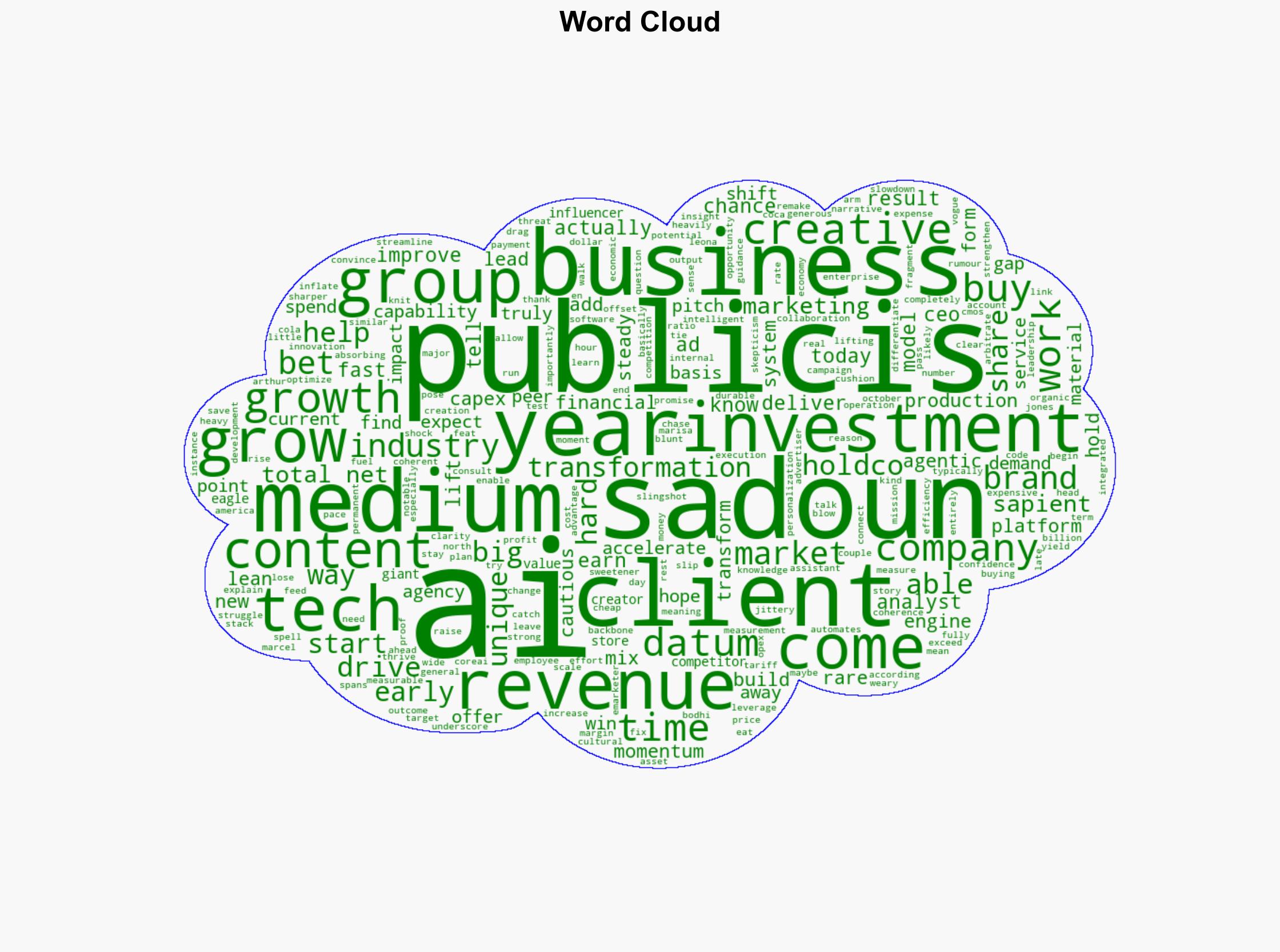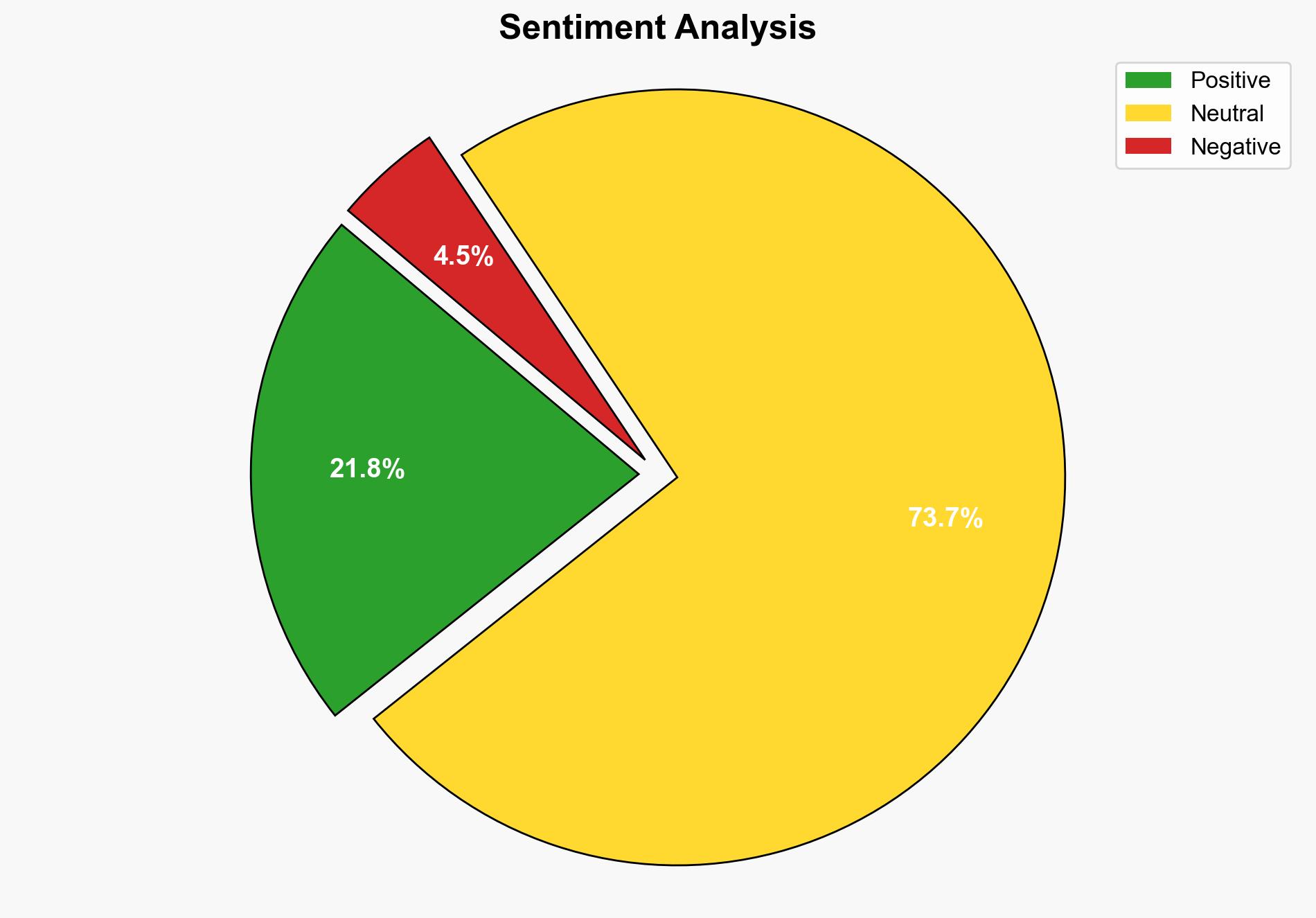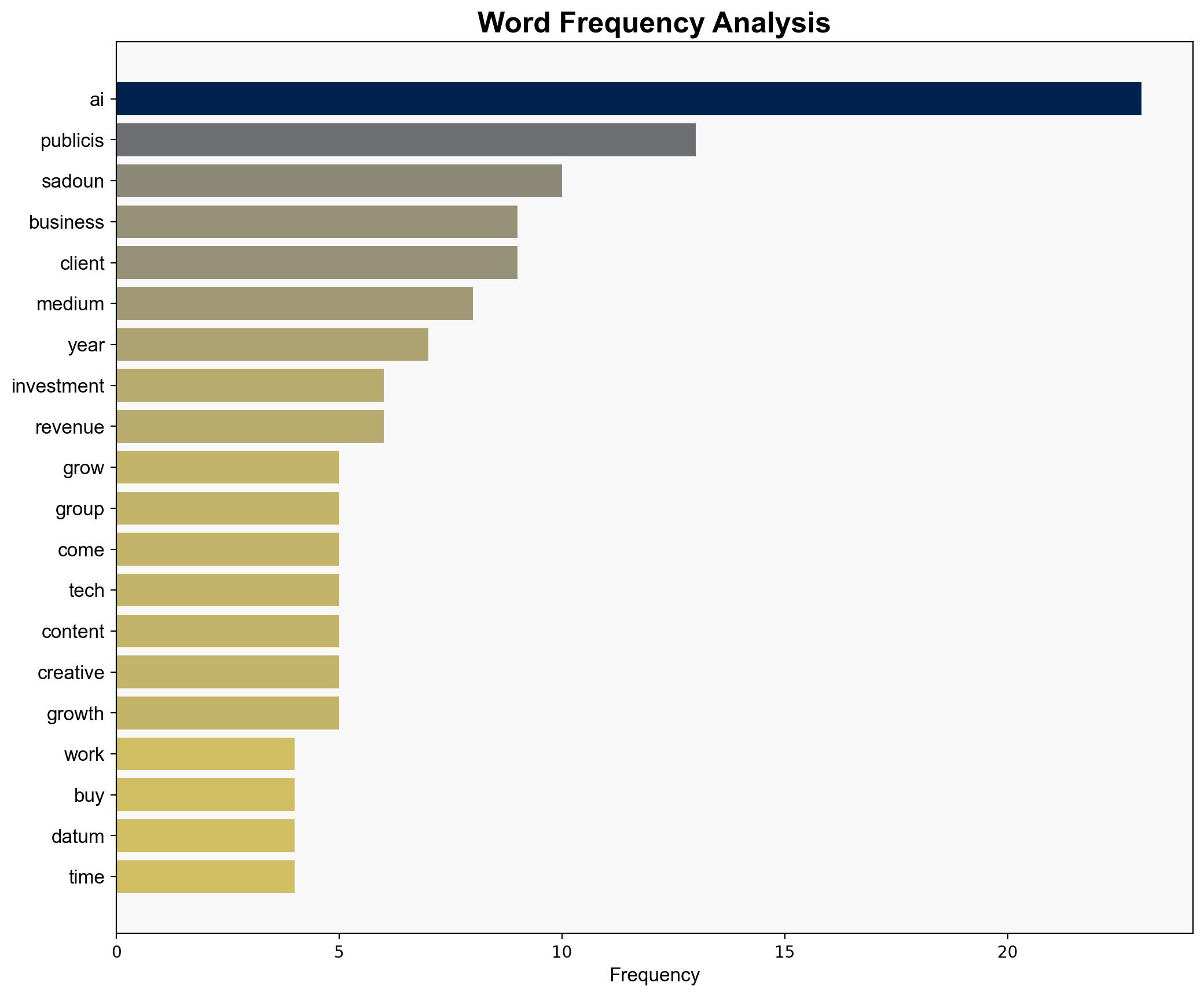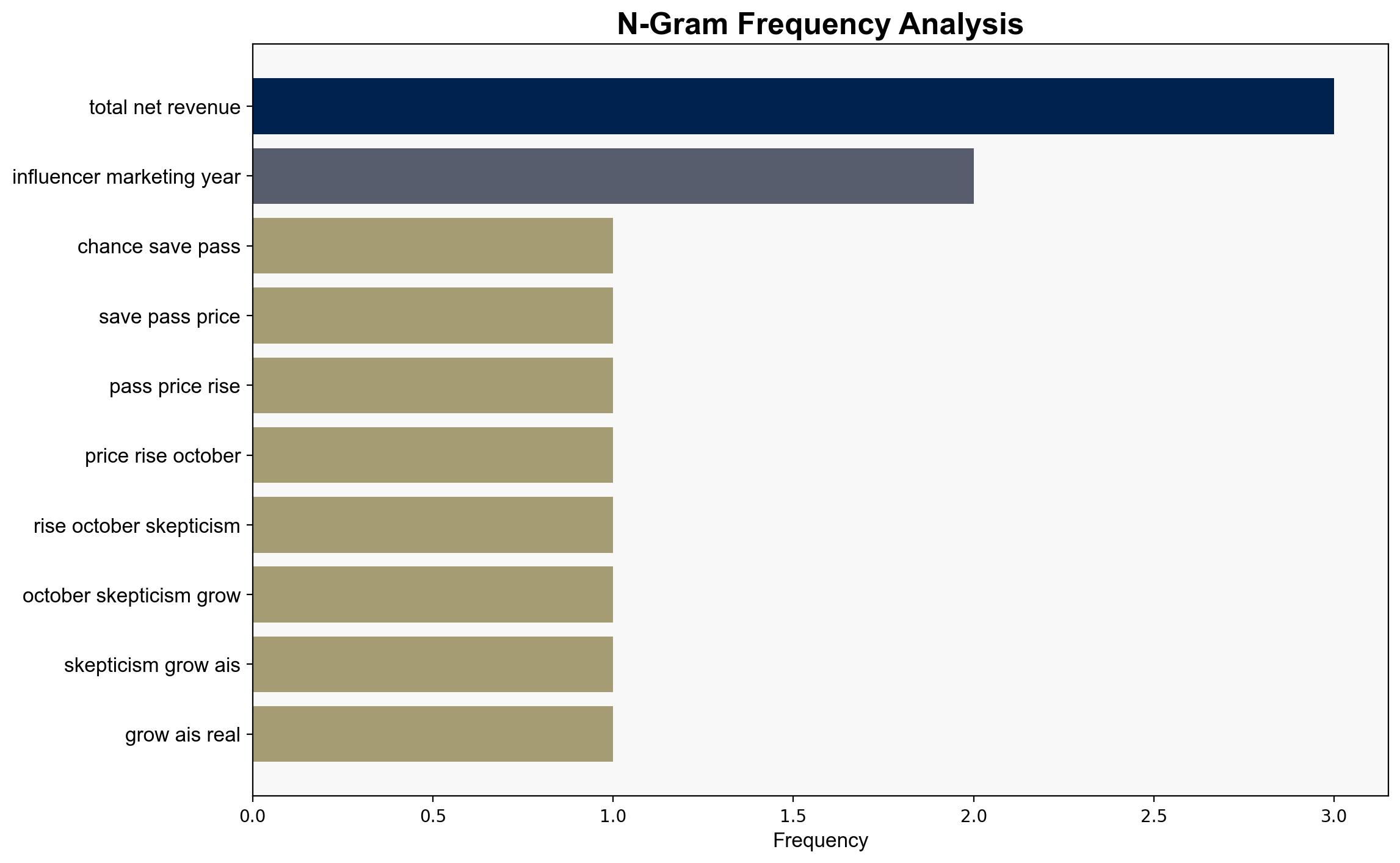How Publicis Group made AI pay off – Digiday
Published on: 2025-10-15
Intelligence Report: How Publicis Group made AI pay off – Digiday
1. BLUF (Bottom Line Up Front)
Publicis Group’s strategic investment in AI has led to a significant competitive advantage, enhancing their media buying and creative processes. The most supported hypothesis suggests that Publicis’s early and comprehensive AI adoption has resulted in measurable business growth and differentiation from competitors. Confidence Level: High. Recommended Action: Continue monitoring Publicis’s AI integration strategies for potential adoption and adaptation by competitors.
2. Competing Hypotheses
1. **Hypothesis 1**: Publicis Group’s early and substantial investment in AI has successfully transformed its business model, leading to increased revenue and market share. This transformation is primarily due to AI-driven efficiencies in media buying, content creation, and client engagement.
2. **Hypothesis 2**: While Publicis Group claims success with AI integration, the actual impact on revenue and market share is overstated. The reported growth may be influenced by other factors such as favorable market conditions or financial maneuvers, rather than AI alone.
Using ACH 2.0, Hypothesis 1 is better supported due to specific examples of AI applications leading to operational efficiencies and client satisfaction, as well as Publicis’s reported financial growth metrics.
3. Key Assumptions and Red Flags
– **Assumptions**: Hypothesis 1 assumes that AI is the primary driver of Publicis’s reported growth. Hypothesis 2 assumes potential exaggeration or alternative explanations for growth.
– **Red Flags**: Lack of detailed financial data linking AI investments directly to revenue increases. Potential bias in self-reported success metrics from Publicis.
– **Blind Spots**: The broader industry context and competitor responses to AI integration are not fully explored.
4. Implications and Strategic Risks
– **Economic**: Successful AI integration by Publicis could pressure competitors to increase their AI investments, potentially leading to industry-wide shifts in cost structures and competitive dynamics.
– **Cyber**: Increased reliance on AI systems may expose Publicis to cybersecurity risks, including data breaches and AI system vulnerabilities.
– **Geopolitical**: As AI becomes a differentiator, global advertising firms may face regulatory scrutiny over data usage and AI ethics.
– **Psychological**: Over-reliance on AI could lead to reduced human oversight, impacting creative quality and client relationships.
5. Recommendations and Outlook
- **Mitigate Risks**: Enhance cybersecurity measures to protect AI systems and client data.
- **Exploit Opportunities**: Leverage AI-driven insights to further personalize client offerings and expand market share.
- **Scenario Projections**:
– **Best Case**: Publicis continues to lead in AI integration, setting industry standards and achieving sustained growth.
– **Worst Case**: AI investments fail to deliver expected returns, leading to financial strain and loss of market position.
– **Most Likely**: Publicis maintains a competitive edge, but faces increasing competition as peers adopt similar AI strategies.
6. Key Individuals and Entities
– Arthur Sadoun
– Publicis Group
– Coca-Cola North America
7. Thematic Tags
artificial intelligence, business transformation, competitive strategy, media industry




